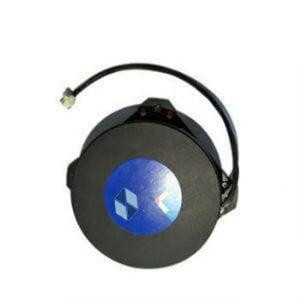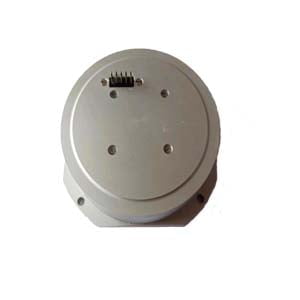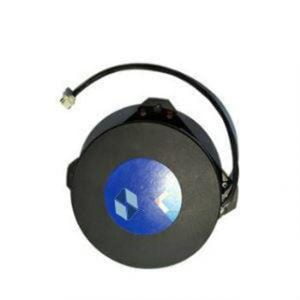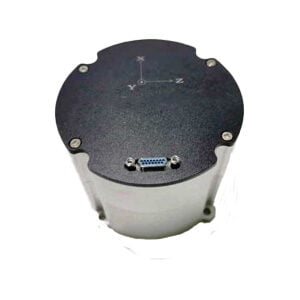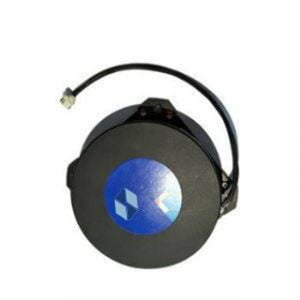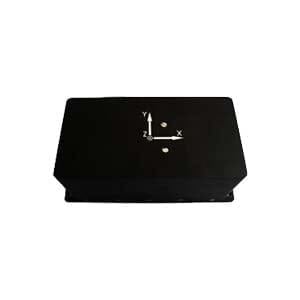1. Zero deviation error of fiber optic gyroscope
In 1913, French scientist G.Sagnac proposed the Sagnac effect, that is, the phase difference between two light waves traveling in opposite directions along the closed optical path is proportional to the input angular velocity of the closed optical path normal. Based on this principle, combined with the development of optical fiber communication device technology and process basis, 1976, Victor Vali and Richard W. Shhorthill of the University of Utah successfully demonstrated the first Fiber-Optic-Gyroscope (FOG) in the laboratory, marking the birth of fiber optic gyro. Its application range is very wide, including inertial navigation systems, automotive and Marine navigation, drones and robotics, shock and stabilization systems, aerospace industry, oil and gas exploration and many other fields. The performance indexes of the core optoelectronic devices in FOG will change under the influence of temperature, and the optical fiber ring is mainly affected by temperature. According to Shupe theory, the change of temperature environment will directly lead to the phase error of FOG, thus increasing the zero-bias error of fiber optic gyro.
2. Temperature compensation model
FOG zero bias error caused by temperature change is nonlinear, that is, with the change of temperature speed, the drift is not constant, and is often affected by a wide range of temperature changes over a period of time, requiring complex compensation and calibration. In order to solve the fiber optic gyro zero bias error caused by temperature change, the researchers set up a variety of models to compensate the temperature error. In general, it can be divided into traditional temperature compensation model and neural network temperature compensation model. The traditional temperature compensation model includes polynomial algorithm and support vector machine, etc. In comparison, neural network has a good approximation ability for complex nonlinear relations, and the model compensation accuracy is high. In recent years, it has become a trend to explore the use of neural network model to compensate FOG temperature. Some scholars use backpropagation neural network and various improved BP neural network models to compensate the FOG temperature error. However, the output of fiber optic gyro is usually not affected by the temperature at a certain moment, and the temperature change within a certain period of time will affect the output of FOG. However, the simple fully connected structure of BP neural network can only compensate the corresponding temperature error according to the temperature influence at a single moment, resulting in limited compensation accuracy. Some scholars have proposed to use recurrent neural network to compensate FOG temperature error. With the memory characteristics of RNN, it can effectively improve the shortcomings of BP neural network model. However, RNN can only remember the input value of the last moment, and the global fitting effect is not good. Some scholars have proposed to use the Long Short-Term Memory (LSTM) neural network model to compensate FOG temperature. The LSTM model can solve the problems of long-distance dependence, gradient disappearance and gradient explosion existing in RNN, and the hyperparameter selection in LSTM, It is often determined by trial and error method, which is not objective, resulting in poor modeling results. To solve this problem, we change the inertia weights, individual learning factors and social learning factors of particle swarm optimization algorithm from fixed values to piecewise nonlinear dynamic values, optimize the hyperparameters of LSTM model, and establish a PN-PSO-LSTM model. The experimental results show that compared with BP neural network model and traditional PSO-LSTM model, the compensation accuracy of PN-PSO-LSTM model is higher.
In many application scenarios of FOG, the real-time demand is very high, because it directly affects the response speed, stability and accuracy of the system, such as in aerospace, ship and vehicle navigation systems, it is necessary to obtain and process the angular speed and direction information provided by the gyroscope in real time to ensure the accuracy and safety of navigation. When the neural network model is used to improve the compensation accuracy, its huge parameter number and model depth make it impossible to reason in the hardware equipment with limited computing resources. How to meet the real-time demand of FOG is a very important research topic. After considering the actual application scenarios of FOG, the number of model parameters and the output accuracy of the model, we use a suitable compression scheme to solve the problem of large hardware resource consumption of the neural network for the optimized model, including knowledge distillation, parameter pruning, nonlinear function linearization, fixed-point quantization and other methods.
The computation of neural network is highly parallel, while FPGA has the ability to realize large-scale parallel computation. The programmable logic unit and internal memory in the FPGA can perform multiple computation tasks simultaneously, thus achieving efficient parallel computation in the reasoning process of the neural network. In addition, FPGA also has low latency, low power consumption, flexibility and other characteristics.
3. Summary
To sum up, we can implement the compression model with Verilog language, and test it successfully on the FPGA development board equipped with a Xilinx chip. The size of the compressed model is reduced by 94.1%, and the compensation speed is increased by 98.47% compared with the PC end. Ericco's fiber optic gyro ER-FOG-50, ER-FOG-60, ER-FOG-70 has no rotating parts and friction parts, low cost, small size, long life, if you want to get more technical data, please feel free to contact us.
More Technical Questions
1.Temperature Drift and Compensation Method of FOG Gyro
2.Analysis of Fiber Optic Gyroscope Output Signal
3.Research on miniaturization technology of fiber optic gyroscope
4.Application of fiber optic gyroscope in aviation field
5.Analysis of Temperature Drift Compensation Method for Fiber Optic Gyroscope
6.Processing and Analysis of Random Drift Error Based on Fiber Optic Gyroscope


